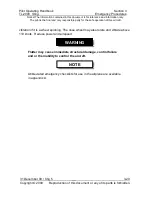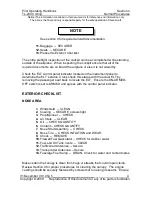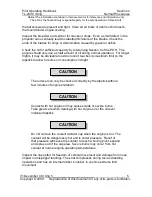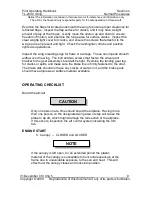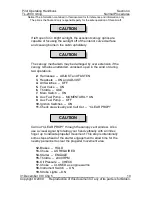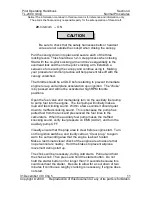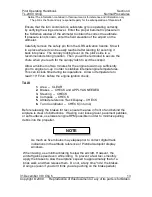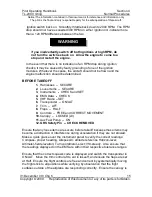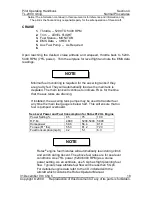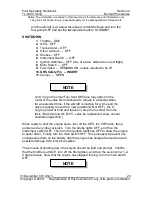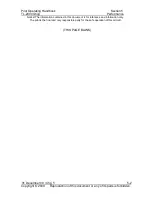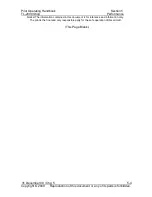
Pilot Operating Handbook
Section 4
TL-2000
Sting
Normal Procedures
Notice! The information contained in this document is for reference and information only.
The pilot is the final and only responsible party for the safe operation of this aircraft.
31 December 09 / Chg 5_____________________________________________13
Copyright © 2009 Reproduction of this document or any of its parts is forbidden.
Ensure that the turn coordinator’s solid state gyro is operating correctly
by verifying the wings are level. Enter the proper barometric pressure in
the Kollsman window of the altimeter to obtain the correct true altitude.
If pressure is not known, enter the field elevation of the airport on the
altimeter.
Carefully remove the safety pin from the GRS activation handle. Stow it
in a place where it can be easily reached after landing for securing it
back into place. The canopy locking lever on the pilot’s side is a
recommended storing location. Then you will be reminded to secure the
chute when you reach for the canopy latch to exit the cockpit.
Allow a minimum of two minutes for the engine to warm up sufficiently
prior to engine run-up in order to stabilize internal engine temperatures.
This can include time during taxi operations. Allow oil temperature to
read 110°F min. before the engine ignition check.
TAXI
1.
Area -- CLEAR
2.
Brakes -- CHECK and APPLY AS NEEDED
3.
Steering -- CHECK
4.
Compass -- CHECK
5.
Attitude reference Track Display -- CHECK
6.
Turn Coordinator -- CHECK (in turns)
Before releasing the brakes for taxi, ensure the area in front of and behind the
airplane is clear of obstructions. If taxiing over loose gravel, pavement pebbles,
or soft surfaces, use lowest engine RPM possible in order to minimize pulling
debris into the propeller.
As much as five minutes may elapse prior to correct digital track
indications in the attitude reference or Pictorial Autopilot display
windows.
When taxiing, use minimal braking to slow the aircraft. However, the
aircraft gains speed even while idling. To prevent a fast taxi, smoothly
apply the brakes to slow the airplane’s speed to approximately that of a
brisk walk, and then release them. Do not, at any time “ride” the brakes.
Doing so (even if you don’t think you are pushing on the brake pedals)
NOTE


